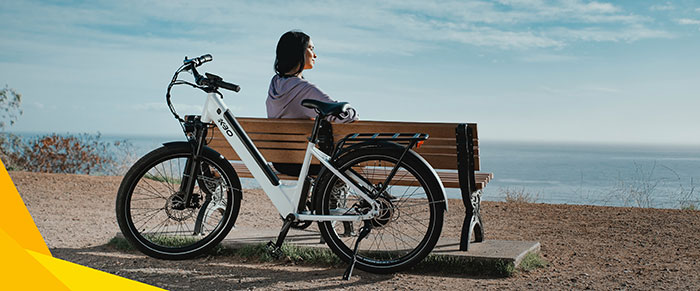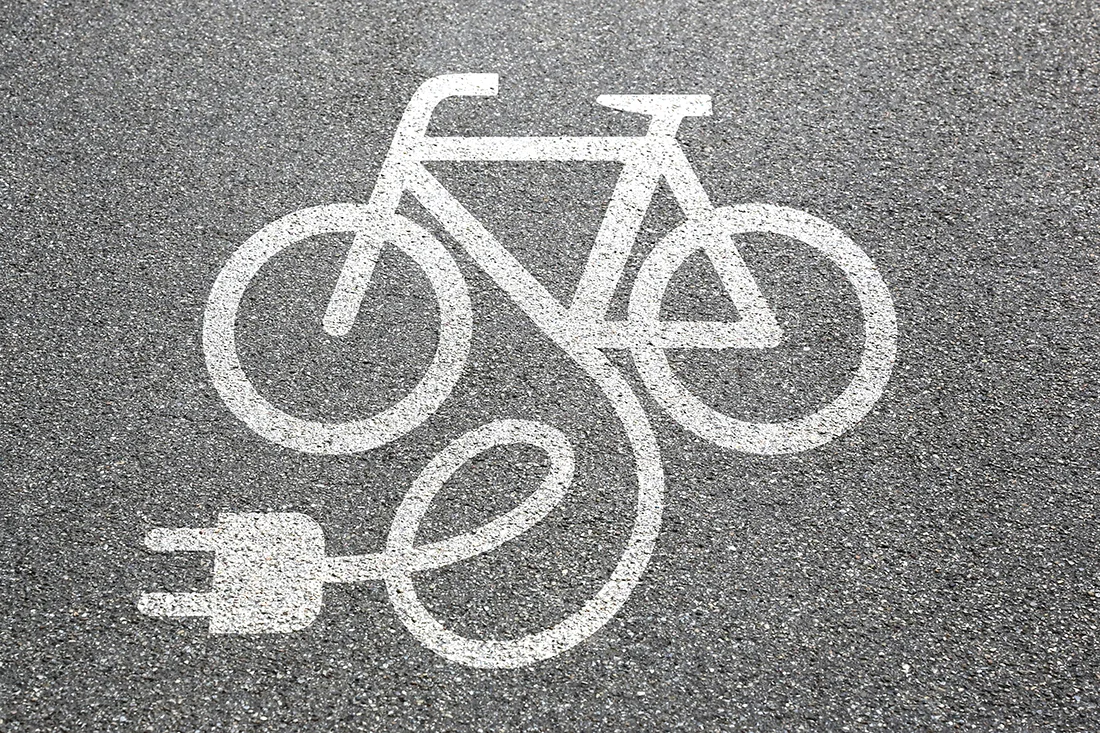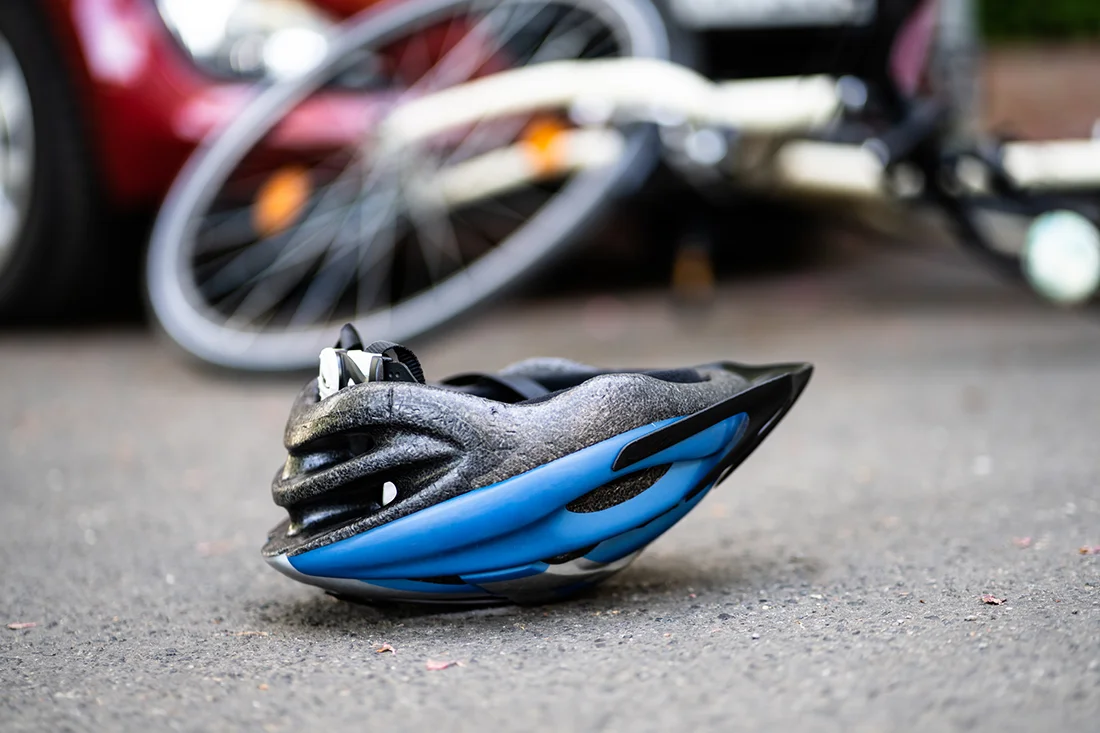Cycling is one of the most impactful and enjoyable forms of weight loss. Rather than slogging away on the treadmill or adhering to an uber-restrictive diet, you can live a balanced and healthy lifestyle while also losing weight through cycling.
Pedaling burns calories, as much as ~500 calories an hour. That’s more calories burned than many other forms of exercise including weight lifting and running.
Cycling has a lower entry-level than other forms of exercise, or the knowledge and skill required to start.
With other forms of exercise such as running or weight lifting, you’ll need a certain amount of fitness or experience to get started.
Of course, you can always start with walking or bodyweight exercises (which we’ll cover more later), but it still takes quite the leap to get to running and weight lifting.
Anyone can learn to ride a bike, and you can use any kind of bike too. Whether you own a 20-year-old single-speed, a cyclocross bike, or an e-bike, you can lose weight through cycling.
Losing weight can be simultaneously simple and complicated, but let’s break it down so that you learn to lose weight.
Contents
Basics First, How Does Losing Weight Work?

Like we said, cycling and weight loss can go hand in hand. At the macro-level, weight loss is most often associated with calories out versus calories in. That is, the number of calories that you consume in a given day must be less than the number of calories that you burn that day in order to lose weight.
This theory on weight loss has been well-supported for many years, although there is evidence that it doesn’t work for everyone.
It is important to remember that bodyweight and shape are individual and specific. What works for one person might not work for another, and genetics play a huge role in our metabolism, muscle to fat ratio, and overall bodyweight.
That said, there have been countless studies that prove that burning more calories than you consume leads to weight loss. For the purposes of this article, we’ll keep it simple.
In order to lose weight, you need to burn more calories than you consume. This can be accomplished in two ways: eating less or burning more.
Nutrition

The first option for weight loss is to eat less, or more precisely, consume fewer calories. Remember that not all foods are created equal. A small piece of cheesecake can (and usually does) have many more calories than a large salad.
Nutrition works differently for everyone. There are a number of key principles that you can use to stay consistent and have healthier eating habits.
Having three meals a day is a well-established practice among most around the world, and is well-integrated into our society and daily schedules.
Three meals a day works because it is before work, during work, and after work. But you can also eat more or less than three meals in one day.
The most important factor towards weight and weight loss is the total number of calories that you’re consuming throughout the day.
However many meals you have, you should aim for a calorie deficit at the end of the day.
Nutrition is very individual, and some people’s stomachs handle it differently than others. While some stick to three meals a day, others have just two, and others have five. We recommend experimenting with different meal schedules to see what works best for you.
In addition to the total number of calories in each meal, pay attention to how it affects your satiety and energy levels.
Recognize while meals and foods make you feel satisfied and full of energy. Try to remove foods that make you hungrier, or make you feel like you need a nap.
Feeling Full But Not Stuffed
Satiety is a word for ‘feeling full’. It’s the sensation that hits after a full meal when your stomach is full and you don’t want to eat anymore.
Being satiated is not being stuffed, which is what you feel after overeating. That’s when your stomach feels bloated, your energy levels drop, and you’d rather have a nap than go and exercise.
The goal of each meal is to achieve sufficient satiety levels – that is, feeling full without feeling stuffed.
Fatty foods and large volumes of food increase satiety. It can help us eat fewer calories while still feeling just as full.
Fatty foods include fish, avocado, boiled potatoes, legumes, quinoa, and nuts. These are “healthy” food options filled with vitamins and nutrients. They will help you feel much fuller than a bag of potato chips.
Processed sugar – found in candy, cakes, fruit juices, etc. – also has the opposite effect. It decreases satiety so that as we’re consuming it, we actually feel hungrier.
In order to lose weight, you should avoid processed sugars. Not only because they are generally unhealthy, but they can increase your appetite even when consumed in large amounts.
Now, when I said large volumes of food, you might be thinking of a triple-decker cheeseburger, an extra-large pizza, or a giant bowl of ice cream.
But when we’re talking about weight loss and satiety, we’re talking about large “volumes” of healthy foods. Not large amounts of calories.
For example, a large salad with leafy greens, peppers, tomatoes, and carrots is a large volume of food and low in calories. All of these ingredients are stocked full of vitamins and minerals, but they have very few calories overall. Consuming this entire salad will leave you feeling full without feeling stuffed.
Tracking Calories

Nowadays, there are so many free apps out there that can help you track your calories and lose weight. MyFitnessPal is one of my favorites.
These apps work by calculating the difference between your calories burned and calories consumed. The remaining balance being the number of calories you eat that day to reach your goal weight.
They also factor in your BMR or your basal metabolic rate. That is the amount of energy you burn just by existing.
Every day, we burn through 1,200-3,000 calories just by sitting, standing, eating, and breathing. It takes energy to contract our muscles, open our eyes, and use our core muscles to support our posture.
Thus, any exercise we do throughout the day will be added to our BMR to give us our total calories burned.
As for your calories consumed, the goal is set by your desire to lose or gain weight. As explained above, if you want to lose weight, you should be in a calorie deficit.
Vice versa, if you want to gain weight (if you were a heavyweight fighter, for example), you should be consuming excess calories.
For example, let’s say your target amount of calories is 2,200, and the calories you’ve burned that day total 2,388 (1800 calories for our BMR + 533 calories burned while cycling for one hour). This means that if you consume 2,200 calories that day, you’ll be at a 188 calories deficit.
It’s a small but significant amount that will help you lose weight at a healthy and sustainable rate.
Why Cycling?
Now, cycling for weight loss – is this a good way to lose weight?
The second option for losing weight is burning more calories, which is most simply accomplished through exercise. Burning calories has to do with our metabolism and work rate. It can be manipulated using structured exercise bouts such as cycling training.
Cycling, like all other forms of exercise, burns calories. In fact, it can burn more than walking, running, swimming, and weight lifting.
Cycling is a primarily aerobic workout. It mainly works the cardiovascular (heart and lung) system rather than the contracting muscles. Of course, your legs can still get sore from a bike ride. But they won’t feel anywhere close to as sore as after a heavy squat session in the gym.
Cycling is non-weight bearing, which makes it ideal for untrained or elderly individuals.
While walking and running are great forms of exercise, they can be hard on the feet, knees, and other joints. The way we sit on a bike, the majority of our body weight is pressed in the saddle.
The pedaling motion only improves the weight distribution, creating a smooth exercise that is easy on our bodies.
When it comes to burning calories and losing weight, the answer is simple: just ride your bike. The more you ride, the more calories you’ll burn, and the faster you’ll lose weight. This way, you will see all the positive effects of cycling on your body.
However, there are a number of different forms of training that can help you burn more calories in less time, boost your metabolism, and get the most out of limited training time.
Related: How to Improve Your Cycling
How Many Calories Does Cycling Burn?
| Calories burned in 30 minutes of cycling | |||
| Activity | 125-pound rider | 155-pound rider | 185-pound rider |
| Bicycling, Stationary: moderate | 210 | 260 | 311 |
| Bicycling, Stationary: vigorous | 315 | 391 | 466 |
| Bicycling: 12-13.9 mph | 240 | 298 | 355 |
| Bicycling: BMX or mountain | 255 | 316 | 377 |
| Bicycling: 14-15.9 mph | 300 | 372 | 444 |
| Bicycling: 16-19 mph | 360 | 446 | 533 |
| Bicycling: > 20 mph | 495 | 614 | 733 |
Cycling burns around 400-600 calories per hour for a middle-weight person riding at moderate intensity. According to Harvard University, a 155-pound person will burn about 600 calories in 60 minutes of riding at 12-14mph, and about 750 calories per hour riding at 14-16mph.
Burning calories on the bike is mostly a metric of power output and cardiovascular intensity.
The faster you ride (high intensity) and the heavier you are (more power), the more calories you will burn.
Specifically, the same researchers at Harvard looked at individuals ranging from 125 to 155 to 185 pounds and found that at the same relative intensities, each group burned approximately 480, 600, and 710 calories per hour of cycling.
They also found that these same groups burned ~10% more calories per hour while mountain biking as compared to road riding.
This is true for most individuals, as mountain biking involves more total body movement using your arms, core, and legs over bumpy terrain.
High-Intensity Interval Training (HIIT)
HIIT training is the most popular form of hard cycling training, and that is performing structured bouts of alternating hard and easy riding.
One of the most popular examples of HIIT training is 30/30s in which you pedal as hard as you can for 30 seconds, followed by 30 seconds of easy pedaling, on repeat for minutes at a time.
There are countless HIIT training sessions to choose from, including Sweetspot, Threshold, and VO2 Max intervals, which each target a specific area of fitness.
HIIT training is a powerful and efficient way to burn more calories in less time by increasing your overall work rate and metabolism.
Calorie burn is correlated with your heart rate and power output, and so the higher your heart rate or the higher your power output, the more calories you are burning.
Seems simple: ride harder and burn more calories!
But to perform HIIT training in the best way, you need to stick to the structured rest periods, such as the 30 seconds off.
These periods will allow your legs to rest and regain the strength to complete the next interval, while your heart rate will lag behind, staying elevated during the rest period.
This increased heart rate will increase your overall work rate and metabolism, leading to more calories burned in the same amount of time.
Endurance Training
 Another way to lose weight through cycling is endurance training. More specifically, Zone 2 training.
Another way to lose weight through cycling is endurance training. More specifically, Zone 2 training.
Following the classic 5-zone training model with Zone 1 being the lowest and Zone 5 being the highest. Zone 2 is the mid-lower level of endurance training that targets your aerobic threshold.
Technically speaking, your aerobic threshold is the highest possible workload you can achieve while keeping your blood lactate under 2mmol/L. In layman’s terms – and practical units – that means keeping your heart rate under ~75% of your threshold heart rate, and ~70% of your FTP.
In even more basic terms, Zone 2 is a moderately hard endurance effort that you can sustain for many hours at a time. It is not the easiest you can go, but it’s not that hard either.
Zone 2 training is incredibly efficient at burning fat, which leads to healthier weight loss than burning through muscle as well.
The biggest upside to Zone 2 training for weight loss is that your body can handle lots of it.
Even for the most highly-trained individuals, HIIT training should not be done more than three times per week. At that rate, you’re going to have to recover so much in between each ride that your overall training volume will be quite low.
With Zone 2 training, you can take on 10, 15, or 20 hours a week of training, fully recover in between each session, and burn fat and lose weight.
But don’t forget to eat! Zone 2 training still burns 500-1000 calories per hour, so if you forget to eat, you are putting yourself at risk of bonking (running out of energy).
Bodyweight Training

Strength training is another great form of exercise that can improve your cycling performance, although its primary benefit is not that you will lose weight.
Bodyweight training is a series of strength training exercises using your body weight instead of weights, such as a barbell or dumbbells in a gym.
Related: Strength Exercises For Cyclists
The most significant benefits to bodyweight and strength training are improved muscle mass, fat loss, and decreased chances of injury.
A typical bodyweight strength training program will focus on simple movements using large muscle groups and joints, as well as stabilizing muscles.
For example, a typical workout could consist of squats, lunges, push-ups, pull-ups, and Bulgarian split squats.
Especially for untrained or inexperienced cyclists, bodyweight alone is plenty of stimulus for significant gains of muscle strength and endurance. And all the while, you’ll be burning fat and increasing your metabolism through hard exercise.
Just a 20-minute bodyweight strength training session could elicit significant changes in your body weight and metabolism, and help lead to fat loss while simultaneously increasing your overall strength.
Planning Ahead
One of the most crucial and underrated aspects of training and weight loss is to have a plan.
After looking at your calories in/calories out, strength training program, and on-the-bike training, you should formulate a plan to execute a healthy and sustained weight loss.
We recommend working with a coach if you are inexperienced, as it can be very beneficial to have an objective set of eyes looking over your diet and training.
Related: Training Plans Explained
Having a plan will allow you to make significant but well-paced changes to your diet and training program. Many riders burn out by doing too much too quickly and aiming for 800 calorie-per-day deficits rather than 300.
You can’t lose 10 pounds in two weeks, or 50 pounds in a month – take your time, be patient, and stay in it for the long haul.
Many people suffer weight relapses when they lose too much weight too quickly. As a general rule of thumb, aim to lose 1-2 pounds per week, no more.
If you are losing weight at a faster rate, you are likely losing muscle mass and with it, strength.
The most significant weight losses are the ones that you can keep off for the next 10, 20, or 30 years. Have a plan, pace yourself, and don’t overdo it.
Focus on maintaining (or even increasing) your strength on the bike and in the weight room, and aiming for a small calorie deficit that will lead to healthy and sustainable weight loss.





